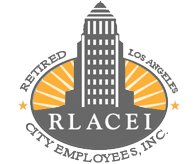
LACERS BOARD UPDATE
By Michael R. Wilkinson
LACERS/Legal Representative
LACERS provides your pension and health benefits in large part by returns from investments, while a lesser amount is from contributions from active members and the City.
Since there is no one “all weather” investment that combines all we need, the LACERS Board and investment staff invest in a mix of investments from super-safe US Treasury securities that pay very low returns, to high-returning assets such as private equity and real estate that are also higher risk. By using a mix, we aim to get a reasonable return on our investment without taking a dangerous level of risk.
This month we will look at our quarterly report of one of the highest paying asset classes, private equity, for the period ending Dec. 31, 2019. A few years ago, the LACERS Board reviewed and made changes to its asset allocation, increasing the share of private equity to 14 percent of all the plan assets. This is our new target and we currently have an 11.2 percent exposure.
We invest in private equity because it has the promise of high long-term returns. However, the challenges include high volatility (the investments can go down as well as up) and a lack of liquidity. That means that we make investments that may have a life span of 10 to 12 years from the first investments until the fund is finished and all the money is paid out. For the most part you cannot get out of an investment early if results are disappointing.
A successful private equity plan makes regular investments every year since we never know in advance which years will be great for investments and which will be terrible. In addition, we diversify over investment type and geography.
Interestingly, looking back, the highest-performing years are for investments made when the investment world is in chaos, and the lowest for investments made when everything seems to be going great, but then of course, prices are very high.
An added bonus for a mature private equity plan (meaning it has been around for several years) such as ours is that it has been cash-flow-positive, meaning it has paid out more in distributions than we have paid in for investment, during most of the past 10 years.
The private equity program returned (internal rate of return, IRR) the following: 12 percent for 1 year; 12.9 percent for 3 years; 10.8 percent for 5 years; 12.5 percent for 10 years; 11.3 percent for 20 years; and 11.2 percent since inception (1995). The 20-year returns beat the benchmark of the Russell 3000 stock index plus 3 percent, while the other time periods lagged the benchmark. This is not unusual; since the stock market was having a bull market it was difficult for private equity funds to match the performance. The Russell 3000 is a broad market index that matches investments in all US stocks.












